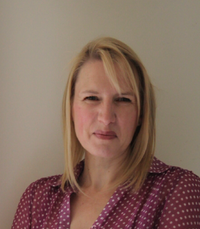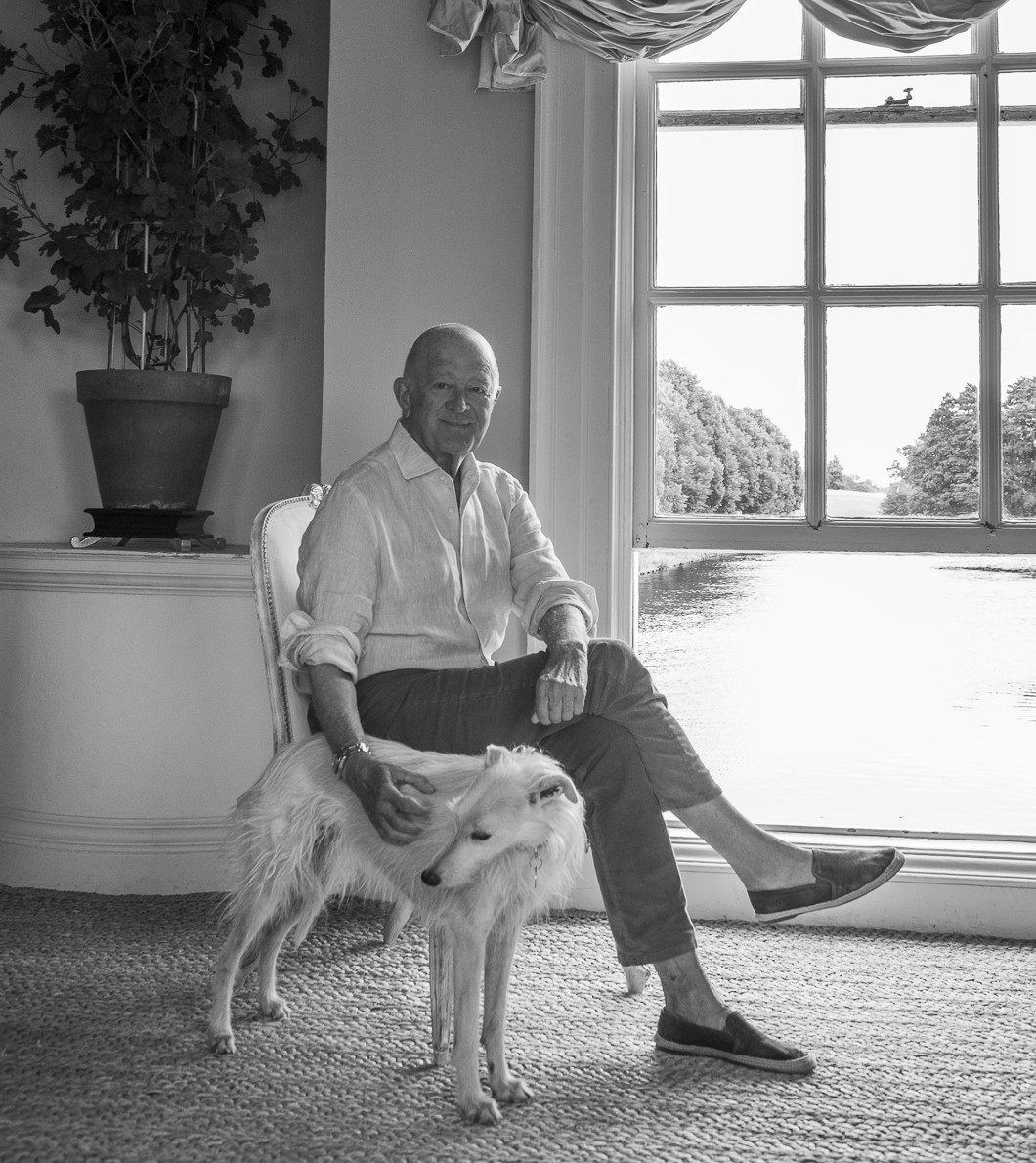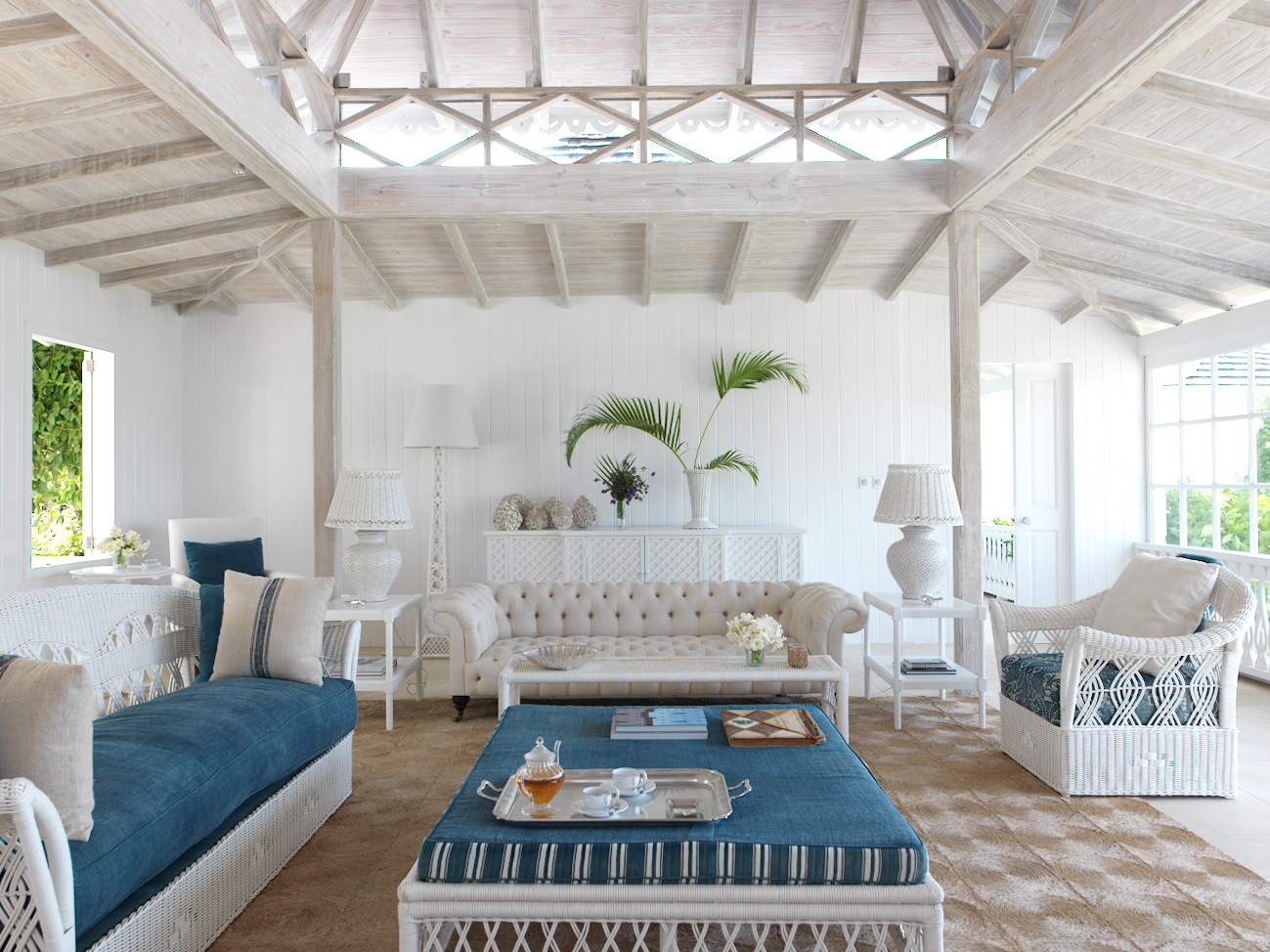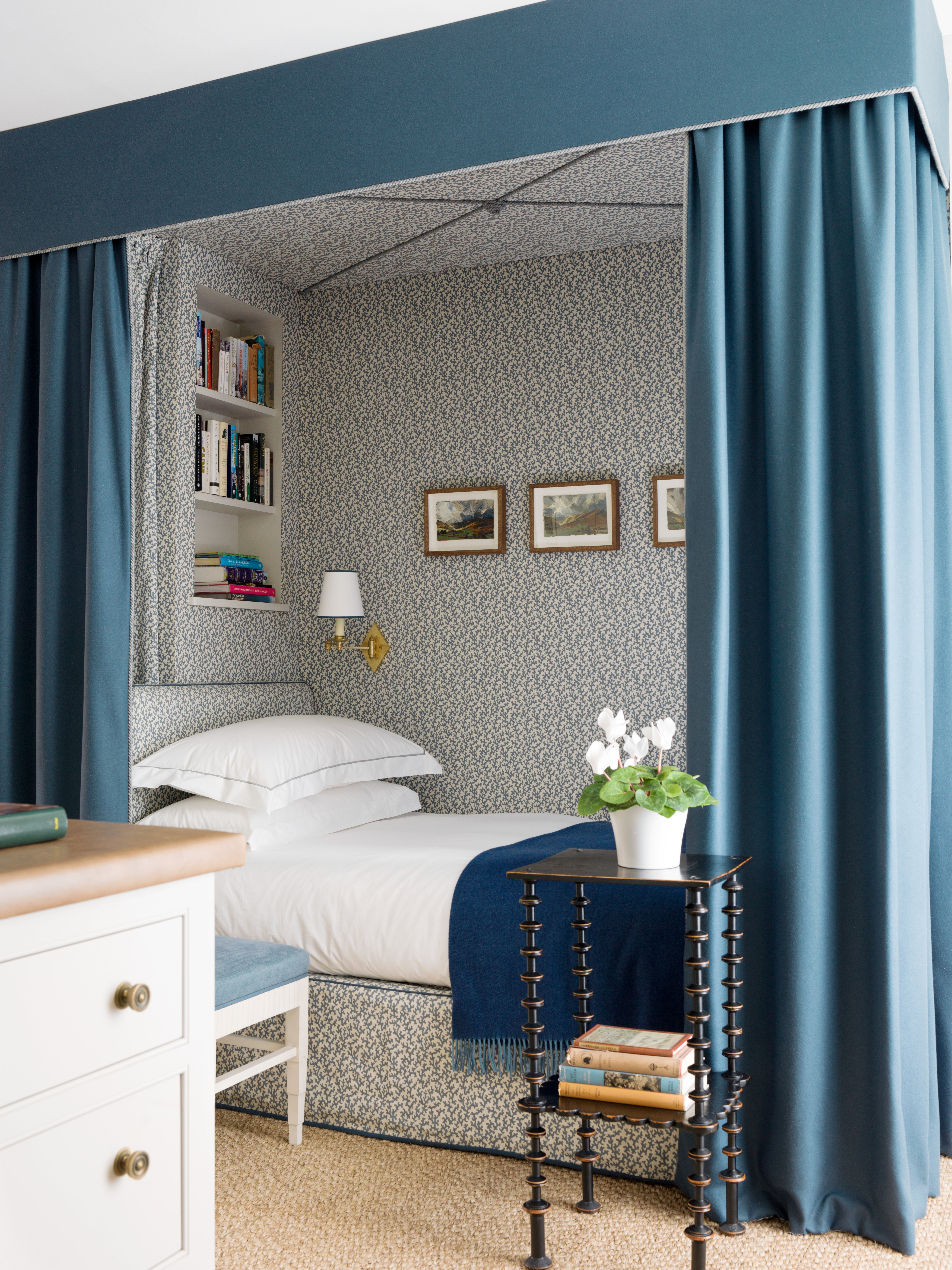Designer Profile: Veere Grenney
Creating timelessly elegant interiors for more than 30 years, the New Zealand-born, London-based Veere Grenney is one of the pre-eminent talents in English interior design


Veere Grenney could fairly be said to be a leading ‘decorators’ decorator’. Reverence for his work is avowed by many interior design professionals as well as his discerning clientele.
His name has featured on lists of pre-eminent designers in influential publications for more than a decade; the interiors of his country retreat ‘The Temple’ have rightly been recognised in the book Interiors: The Greatest Rooms of the Century (Phaidon), and India Hicks is not the only aesthete to have paid homage to his eye, confessing in one of her books to ‘copying’ a bedroom scheme in her own Oxfordshire home.
Thirty years into his career, the New-Zealand born, London-based designer shows no sign of slowing. He and his team of eight are currently working on interior design projects in London, the Midwest and the Hamptons, including a significant new build.
The Veere Grenney ‘Gazebo’ designs of handmade lacquer tables and trays in collaboration with The Lacquer Company came to fruition at the close of 2021 and a second fabric and wallpaper collection with Schumacher is set to go into production within the next 18 months. His eponymous range of prints and furniture, launched from 2005, also continues to enchant.
Style aesthetic

Balance, proportion, harmony and elegance allied with deep respect for architecture and geometry are the qualities that underscore Veere Grenney’s work. His interiors might be said to be the epitome of contemporary classicism, although his studio can, and has, delivered almost every style.
He has worked on a wide spectrum of properties: from contemporary New York apartments to Arts & Crafts homes to 18th century English country houses to breezy villas in Mustique. Some of his most prestigious or best-known works include two penthouses at Claridge’s in London, Ferne Park in Wiltshire and, of course, the now iconic interiors of one of his own homes ‘The Temple’; a Palladian-inspired idyll in Suffolk, fittingly once also owned by the late great David Hicks.
An omnipresent passion

Veere regards working in interior design as a calling and a profession rather than a career (more of career paths later) not only because he is passionate about detail to the nth degree but because design pervades his subconscious at every layer of life.
Design expertise in your inbox – from inspiring decorating ideas and beautiful celebrity homes to practical gardening advice and shopping round-ups.
“If you’re in interior design because you love the process of creating of beauty and harmony it’s very privileged and not usually something you leave behind at 5 o’clock when you leave the office. Your focus on aesthetics is in the manifestation of so many things: it’s your entire life, it’s on every level, whatever you are doing, from laying a knife and fork on a table to putting (together) a bowl of flowers. It’s not just about putting a room together.”
Route to design

His route to design – and to England – was a somewhat bohemian journey. Interior decorating wasn’t widely recognised as a profession during his teens in the 1960s and the figures that influenced from a distance were those rarefied ‘celebrity’ names such as David Hicks, Max Clendinning and Billy Baldwin whose work was enjoyed through the glossy pages of printed magazines.
‘When you talk about an interior design career path you have to remember that until 30 years ago there was no such thing and no one really knew what the job was. I think one always imagines this nirvana idea that one is born and there is some sort of a great revelation about what you are going to do.
‘Today, you can have a career path which is more mapped out but back in those days there was no such thing,’ says Veere, adding, ‘I always adored houses, always loved interiors and I couldn’t get enough of looking or reading about them from a very, very early age. The desire was there but not necessarily the understanding of how to manifest it.’
A cultural journey

In his fascinating and warmly written book Veere Grenney on Decorating: A Point of View (Rizzoli International) he talks of abandoning a history degree aged 21 to travel to Australia and Singapore then on to ‘the hippie trail’ of Nepal, India, Afghanistan, Turkey, Burma and Goa, but always with London as his ‘ultimate goal’. Here, he set up his own stall in Portobello dealing in antiques, as well as working in restaurants ‘just trying to make a living and trying to manifest what I wanted to do’.
Opening a shop on Westbourne Grove brought higher recognition amongst other creatives working in what he refers to as ‘the beauty business’. ‘In those days, in the 1970s, if you wanted to express yourself artistically you had an antiques shop and you styled it to look like a room set. That was your flagship; it was the notice you put out to the world about who you were.
‘It was a tiny world so it wasn’t difficult, really, to suddenly know people in the business, like Christopher Gibbs or George Sherlock who were the antique dealers and style merchants of the day. Then there were people such as Ruth Sheradski, who ran a shop called Loot, Ross Hamilton who had a great shop on the Pimlico Road, Geoffrey Bennison and so on. All those people made up this milieu.’
When asked for pivotal moments in his work, Veere says, ‘Seminal moments in one’s career are really when one makes perfect moves in life. My first pivotal moment came when I was 31 and got my first proper “grown-up” job with Mary Fox Linton, managing her shop and then working in interior design. After that my next moment has to be going to Sibyl Colefax & John Fowler in a senior position, 10 years later, and then five years after that working on my own from then on.’
He later expands, ‘Developments into a range of fabrics, furniture collaborations and so on happened organically. It was never part of a strategy.’ He adds, ‘The stories of my generation are quite unique, although, of course, you don’t see that at the time!’
Doing the work

The importance of apprenticeship is something Veere wholeheartedly espouses, both in words and action. Indeed, he set up his eponymous business aged 45. ‘To be good in our business – I’m not saying about taste, I mean just to be good or competent – you need at least 10 to 15 years of experience. I don’t care what anyone says – you just do – and I rabbit on about that all the time.
‘In my opinion, to have the gravitas or the professionalism to encompass beauty, furniture, fabric, architecture, style, the listing of buildings, the historic decoration of buildings, to know what is “a sacred cow” and what isn’t, to understand all the things involved in our business – plus how to live, plus gardens – you need many years of work.’ He also says, ‘But it is brilliant that interior design is this huge business now and that there are great opportunities.’
Lifelong learning

Veere Grenney’s appetite for design remains infectious. ‘What is really exciting is that there are always more things to learn. I could still spend every day of my life looking at beautiful houses around the world, seeing houses I haven’t seen before and the aesthetics that go with them.’
He goes on to say, ‘Just think of the richness of England and the beauty of houses within it from city to country and everything in between. And then I also love America so much for our work because they build such beautiful houses today. If you look at Great American architects – like Adler – well, they were geniuses.
‘And then you look at Peter Pennoyer today or Gil Schafer or James Carter , they are building beautiful houses…. I mean ravishing! And if their clients have even more awareness they’ll have a marvellous garden to go with the house.’
He reveals, ‘I’m building a house at the moment for some clients in America – it’s about 8000 square feet and I just find the process so wonderful, whereas in England it’s so difficult to build a new house.’
He goes on to say, ‘However, in England we do something else which is to restore marvellous great country houses as well as smaller cottages. We (in England) manifest what we can within the capabilities of our incomes.’
Final musings

When tasked with considering his ‘superpower’ he says, ‘I can’t draw, I can’t use a computer, but I am good at being the conductor. A very good interior designer is like an editor; you have the ability to visualize the whole, to recognize the potential in the ingredients, to recognize the quality of a maker and to bring this altogether.’
When quizzed as to where one should never compromise he says, ‘It’s a very difficult thing to say because the glorious thing is that every single rule is one to be broken. But the word integrity is one of the most important words in the world. There should be an integrity to everything you do.’
Good design, he believes, is ultimately, about bringing beauty to every element of life. ‘Even from childhood, I think I had that subconscious desire to know how people live because one usually equates beautiful houses with the way people live. That is why the subject of interior design is so big because it’s not just about what a room looks like. If you’re good at your job, it’s really about considering all the layers of an interior that are often indefinable to the untrained eye but which significantly improve and enhance one’s way of life.’

Interiors editor and brand consultant, Kerryn Harper-Cuss has worked on four interior magazines and edited three of these, most recently The English Home, where she was Editor-in-Chief of both its UK and US editions for almost 12 years. She now writes for a number of high-caliber publications, moderates design seminars, and is particularly delighted to pen profile features on world-class interior designers for a regular slot on the Homes & Gardens website.